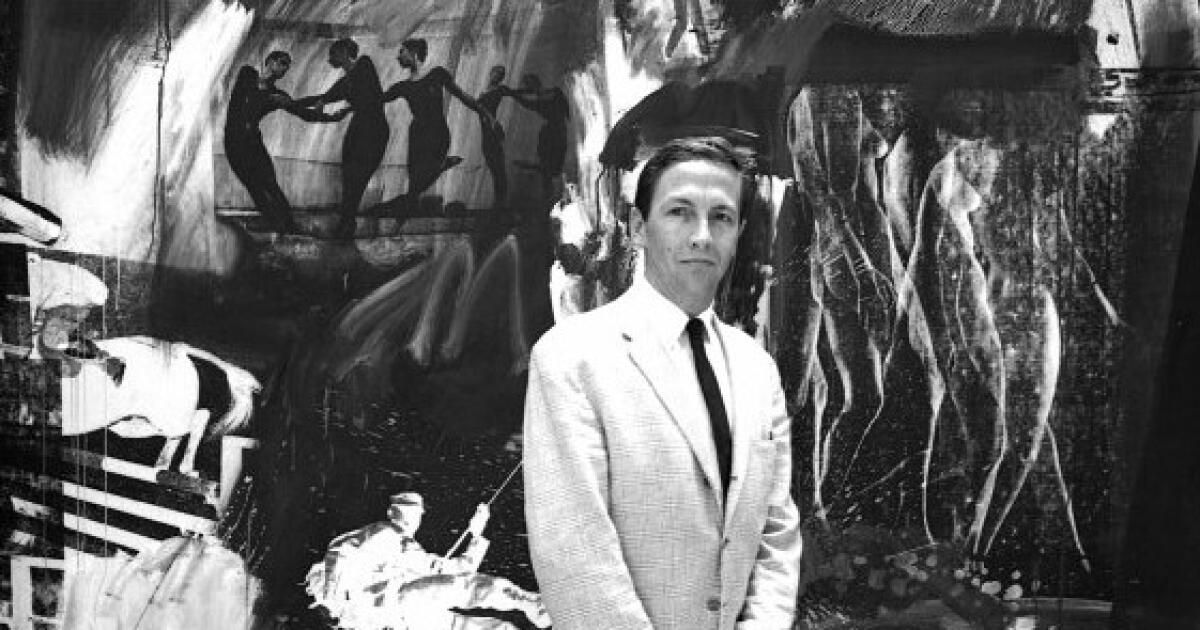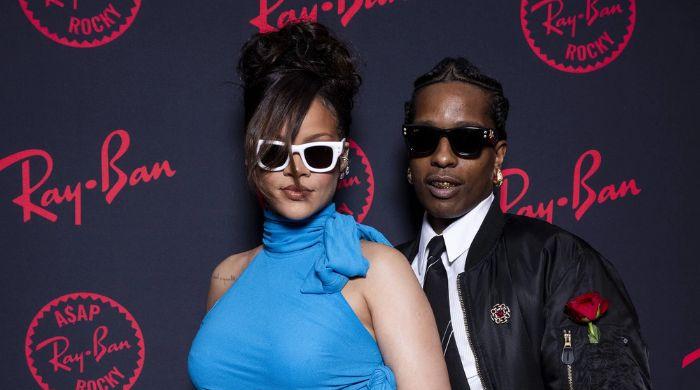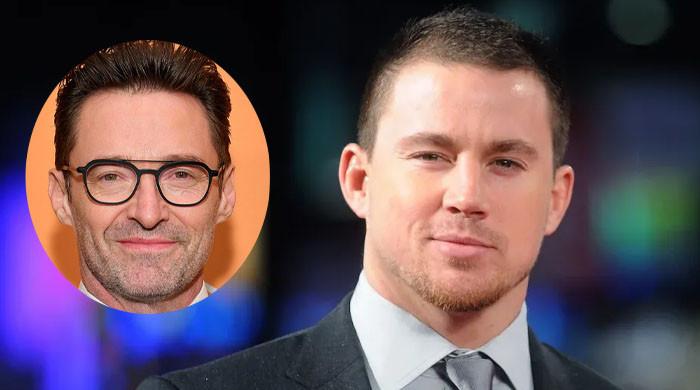The Venice Biennale may have lost much of its singular luster, now that hundreds of periodic surveys of new international art have joined the list of what was the first (and, for decades after its founding in 1895, one of the few) of its kind. An artist can still gain a major career boost by successfully participating in the venerable and widely publicized Italian exhibition, currently in its 60th edition. (It will remain on display in the city's Giardini and Arsenale until November 24.) But no one anymore expects the show to dramatically alter broader perceptions of art as it once did, perhaps most notably in 1964.
That was the year Robert Rauschenberg, then 38, became the first American artist to win the coveted Grand Prix for Painting, now called the Golden Lion. Upon the announcement, all hell broke loose. “Betrayal in Venice,” screamed the overheated headline of a newspaper.
The unprecedented award to an American artist who, a decade earlier, heralded the culmination of the controversial pop art genre sealed a slow but steady change underway since the end of World War II: New York officially unseated Paris from the top spot in creators of cultural trends. The critical press in Europe, especially France, framed the story as a scandal. Surely there were tricks at play.
That's the framework that guides “Taking Venice,” a bumpy new documentary directed by New York filmmaker and arts writer Amei Wallach. “Taking Venice” doesn’t take a position on whether a dishonest caper tainted the jury’s process in choosing Rauschenberg, though it does leave the appropriate sense that the artist easily lived up to the honor. (The other Biennale prizes went to Hungarian-Swiss sculptor Zoltan Kemeny, German cartoonist Joseph Fassbender, Italian printmaker Angelo Savelli, and sculptors Andrea Cascella and Arnaldo Pomodoro, all respectable at best.) However, the framing also gets in the way of a good presentation. -Informed vision of a significant historical moment.
Conspiracy theories fueled the original “scandal” plot, but the jockeying for the prize actually continued as usual. When something unexpected and dramatic happens, like the Biennale's American “first,” creating a conspiracy theory is a way to make at least a semblance of sense to a seemingly inexplicable event. An irrational illusion of rational explanation that provides a veil of stability in an upside-down world.
Rauschenberg's anointing was too much for those who simply could not comprehend that Paris – the source of Picasso, Matisse, Miró, Brancusi and even Duchamp – had been toppled on the international cultural stage by a supposedly vulgar, Texas-born upstart who screen-printed images commercial. of President Kennedy and phallic rockets on canvas and the famous paint smeared on the nose of a stuffed goat (“Monogram,” 1955-59). A cultural crime had occurred. It was necessary to assign blame. The conspiracies multiplied.
The story of what really happened in the run-up to the award is certainly complicated. For clarity, Wallach cleverly crafts the film around four main actors, beginning, of course, with “The Artist.” A miniature of his artistic biography is displayed.
Then there's “The Dealer,” Leo Castelli, an affable, affable Italian expatriate in New York who engineered the rise of American pop, including Rauschenberg, to commercial success. Raised in Trieste, across the Adriatic from Venice, he also understood the European fascination with democratic capitalism represented by Pop's soup cans, Hollywood celebrities and comic strips, as post-war reconstruction depended on commercial products. Americans. That the gallery run by Ileana Sonnabend, Castelli's Romanian ex-wife, was located in Paris didn't hurt.
“The Insider” is Alice Denney, a Washington, DC art expert, wife of a State Department lawyer, and friend of the Kennedy family. (Denney died in November at age 101.) For the first time, the U.S. government was helping to sponsor the privately run American Pavilion in Venice, as foreign governments always did with theirs. When a boost was needed, such as securing a military cargo plane to transport large-scale works of art across the Atlantic, Denney was available to push the necessary buttons.
Finally, “The Commissioner” who organized the American presence at the Biennial was Alan Solomon. He had turned Manhattan's Jewish Museum into an avant-garde hothouse during his brief tenure as director, from 1962 to 1964, including solo exhibitions of Rauschenberg and his former lover, Jasper Johns. Solomon, little known today, was a Harvard-educated bon vivant known for his scholarship on the history of European new art. In 1970, when he died of a heart attack at age 49, just months after the opening of his last exhibition, “Painting in New York: 1944-1969,” at the Pasadena Museum of Art, he was president of the new art adventurer. UC Irvine department.
“Taking Venice” recreates a last-minute transfer of large paintings by Robert Rauschenberg by water taxi to the Giardini.
(Movies of the zeitgeist)
The artist, the dealer, the connoisseur, the commissioner: the complexities of organizing the presentation in Venice are clearly laid out in the film. There are also appropriate nods to familiar elements of the cultural context, which contributed to the final shock.
The list is long. Rauschenberg's controversial work had been categorized as “anti-art” inspired by Dadaism. The sponsoring American government had well-established Cold War propaganda interests. Solomon's show was too big for the relatively small American Pavilion, so a rule-breaking annex was put into service in the empty former American consulate next to Peggy Guggenheim's palace-museum on the Grand Canal, increasing a feeling of arrogance of the superpowers. International resistance hailed President Lyndon B. Johnson's expansion of the U.S. military presence in Indochina, which undermined global sympathy after Kennedy's assassination. Sam Hunter, an influential American art historian, joined the prize jury at the last minute. At Venice's legendary Teatro La Fenice, a late-night performance of American avant-garde dance by Merce Cunningham and John Cage with sets by Rauschenberg was a huge hit. And much more.
Still, all that was just loading dynamite. For an explosion, the fuse needed to be lit. It was Solomon who brought the matches.
Grand Prix selection was always the result of shady dealings between influential supporters in smoke-filled backrooms, but Solomon drew an aggressive public line in the sand. While the deadlocked jury deliberated in private, it held a press conference and distributed an official statement. With the title “Americans in Venice,” printed in all caps, the sheet featured a tourist photograph of the old Rialto Bridge spanning the Grand Canal juxtaposed with a three-tiered painting of an American flag by Johns.
As if the pictorial history of the crossing of the Rubicon were not enough, the powerful text declared: “The fact that the world center of art has moved from Paris to New York is recognized everywhere.” The famous Venice Biennale, Solomon suggested, risked becoming irrelevant.
Rauschenberg's final selection certainly gave everyone something to talk about, and they did, often loudly. (The selection sowed “the seeds of a new fascism,” in the view of one particularly extravagant critic.) The artist himself was happy but anxious, and soon decided to destroy all the silkscreens he had used to make his paintings on display so he could not repeat himself. . In retrospect, he observed of the new professional pressures: “There were times when I thought things would have been much better if I hadn't been so lucky.”
But a conspiracy? Despite the film's annoying musical score (by CheeWei Tay), which beats furiously like a B-movie melodrama, that's nowhere to be found. Haggling voting feels more like the norm, which is pretty interesting. Thanks to the Internet and social media these days, conspiracy theories have become epidemic, as crowds can now hear the same fantastical whispers about a rigged game. mass. (For more details, Google “January 6, 2021.”) Sixty years later, its ubiquity makes “Taking Venice” seem rather quaint.
Much of the factual foundation for the story was clearly provided by “The Great Migrant: Robert Rauschenberg and the Global Rise of American Art,” the critically acclaimed 2010 book by art historian Hiroko Ikegami. (She appears in the film to offer welcome narrative details.) At times, the story veers into long but unnecessary asides, including staged recreations of the slightly comical difficulty of moving (fake) Rauschenberg paintings in water taxis, the adventures of the dealer of Sonnabend in Paris. and the American Pavilion exhibitions held in 2017, 2019 and 2022. At 98 minutes, “Taking Venice” is half an hour too long.
Still, the story it contains is important. A historic change occurred. The story is well told and worth knowing, even without conspiracy murmurs.
A preview of the film is scheduled for Thursday at UCLA's Hammer Museum, followed by a question-and-answer session with the director. Wallach will do the same on Friday and Saturday nights at the Laemmle Royal in West Los Angeles, where the film premieres for a week.
'Taking Venice'
Not qualified
Execution time: 1 hour, 38 minutes
Playing: Laemmle Royal, Santa Monica; 5 Laemmle City Center, Encino












